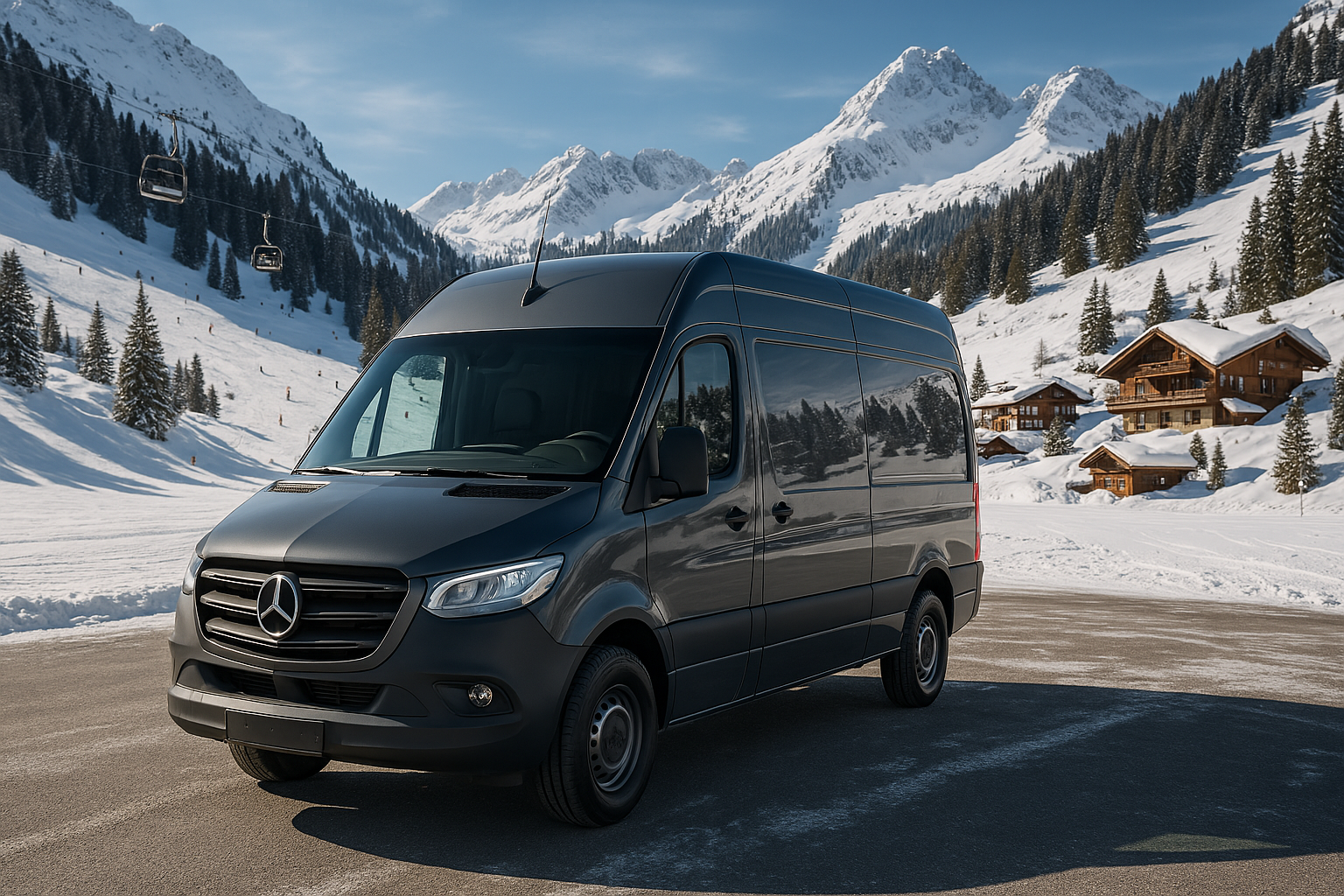Mercedes-Benz Sprinter: A Versatile and Trusted Commercial Vehicle
The Mercedes-Benz Sprinter is a renowned light commercial vehicle produced by the German automotive manufacturer Mercedes-Benz. Since its debut in 1995, the Sprinter has built a reputation for reliability, performance, and versatility in both cargo and passenger transport. Known for its solid construction and innovative design, the Sprinter has become a mainstay in global markets, serving industries ranging from logistics and emergency services to tourism and construction. Its availability in multiple configurations makes it a highly adaptable platform for a wide array of commercial applications.
Manufactured in several countries including Germany, Argentina, and the United States, the Sprinter is offered with different body styles such as panel van, chassis cab, minibus, and crew van. The vehicle is available with multiple wheelbase options and roof heights, allowing businesses to customize it according to their operational needs. Its gross vehicle weight rating (GVWR) can range from 3.0 to 5.5 tonnes, depending on the model and configuration. This flexibility has contributed to its widespread use in both urban and rural environments, as it can navigate narrow streets while still offering substantial cargo or passenger capacity.
Engine Options and Performance
The Sprinter is offered with a variety of diesel and gasoline engines, catering to different regional markets and regulatory requirements. Common engine choices include four-cylinder and six-cylinder diesel engines that prioritize fuel efficiency and torque for hauling heavy loads. In some markets, a gasoline-powered version is available, including models that can be converted to run on compressed natural gas (CNG) or liquefied petroleum gas (LPG). Recent models include the OM651 2.1L four-cylinder diesel engine and the OM642 3.0L V6 diesel engine, both of which are known for their durability and strong torque characteristics.
Mercedes-Benz has also introduced electric versions of the Sprinter, such as the eSprinter, to support environmentally friendly urban transport solutions. The eSprinter is powered by an electric motor and equipped with a lithium-ion battery pack, providing zero-emission driving suitable for last-mile delivery and other urban logistics. While its range is limited compared to traditional internal combustion engines, it meets the growing demand for sustainable transportation in cities with low-emission zones. The inclusion of electric models reflects the manufacturer's commitment to innovation and ecological responsibility.
Interior Features and Technology
Inside the Mercedes-Benz Sprinter, drivers and passengers benefit from a functional and ergonomic cabin designed for long workdays and frequent stops. Standard features often include a multifunction steering wheel, a digital instrument cluster, and a touchscreen infotainment system with navigation capabilities. Higher trims may offer features such as a 10.25-inch MBUX display with voice command, smartphone integration, and advanced connectivity options. The interior layout is modular and can be customized with shelving, seating, or cargo partitions to suit specific professional needs.
The Sprinter is also equipped with a range of driver-assistance systems that enhance safety and convenience. These include active brake assist, crosswind assist, blind spot monitoring, and lane-keeping assist. Adaptive cruise control and a 360-degree camera system are available in select models, making the vehicle easier to maneuver and safer to operate in tight spaces or crowded environments. Mercedes-Benz places a strong emphasis on safety in the commercial sector, which is reflected in the comprehensive suite of features offered in the Sprinter.
Market Applications and Industry Use
Due to its adaptability and robust design, the Mercedes-Benz Sprinter is widely used across multiple sectors. In logistics, it serves as a reliable delivery vehicle for courier companies and online retailers due to its large cargo space and efficient fuel consumption. Ambulance services often rely on Sprinter chassis because of the vehicle's ability to accommodate medical equipment while providing stability and speed. In public transportation, the minibus version of the Sprinter is frequently used by shuttle services, hotels, and tour operators.
Additionally, the Sprinter has become popular in the camper van conversion market, where its spacious interior and build quality make it ideal for recreational vehicles. Custom builders and DIY enthusiasts alike value the Sprinter for its straight walls and high roof, which allow for more effective use of interior space. In construction, tradespeople use it as a mobile workshop, equipping the van with tools, storage solutions, and power supplies. This broad appeal across industries underscores the Sprinter's utility and long-term value.
Global Reach and Localization
The Mercedes-Benz Sprinter is available in over 130 countries, with localized versions tailored to meet regional regulations and consumer expectations. In North America, the Sprinter is sold under the Mercedes-Benz and Freightliner brands, with assembly taking place in Charleston, South Carolina. In Europe, it competes in the light commercial vehicle segment alongside models like the Ford Transit and Volkswagen Crafter. Its international production footprint and distribution network contribute to consistent global availability and aftersales support.
In developing markets, the Sprinter often serves as a critical link in transportation networks, from passenger transit to cargo delivery. Mercedes-Benz supports these regions through training programs, authorized service centers, and the availability of spare parts. This ensures that even in remote or challenging environments, the Sprinter remains a dependable asset. The company's investment in global infrastructure further solidifies its position as a leader in the commercial vehicle segment.
Evolution and Model Updates
Over the years, the Mercedes-Benz Sprinter has undergone several generational changes to incorporate advancements in automotive engineering and customer feedback. The first generation was introduced in 1995 and quickly gained acclaim for its modern styling and performance. The second generation launched in 2006, bringing improved aerodynamics, upgraded safety features, and greater load capacity. The third and current generation debuted in 2018, introducing front-wheel drive options, increased digital integration, and an expanded electric lineup.
Each new iteration of the Sprinter has sought to balance innovation with the rugged dependability that users expect. The introduction of modular architecture and enhanced customization options means that customers can fine-tune their Sprinter to fit a wide variety of operational roles. Mercedes-Benz continues to update the vehicle with software improvements and new technologies to keep pace with changing industry standards and user expectations. This ongoing evolution ensures that the Sprinter remains a relevant and competitive choice in the light commercial vehicle market.

